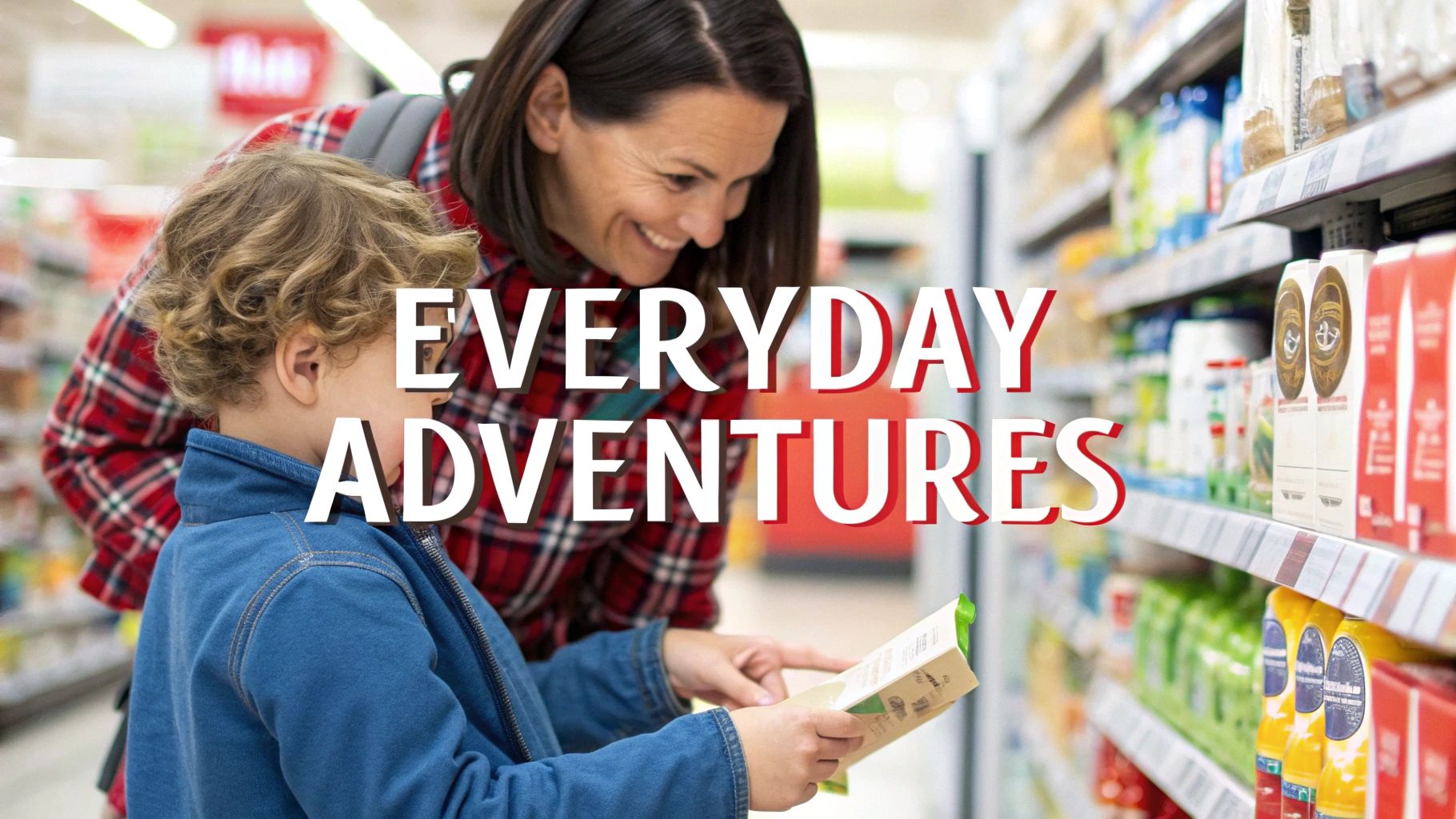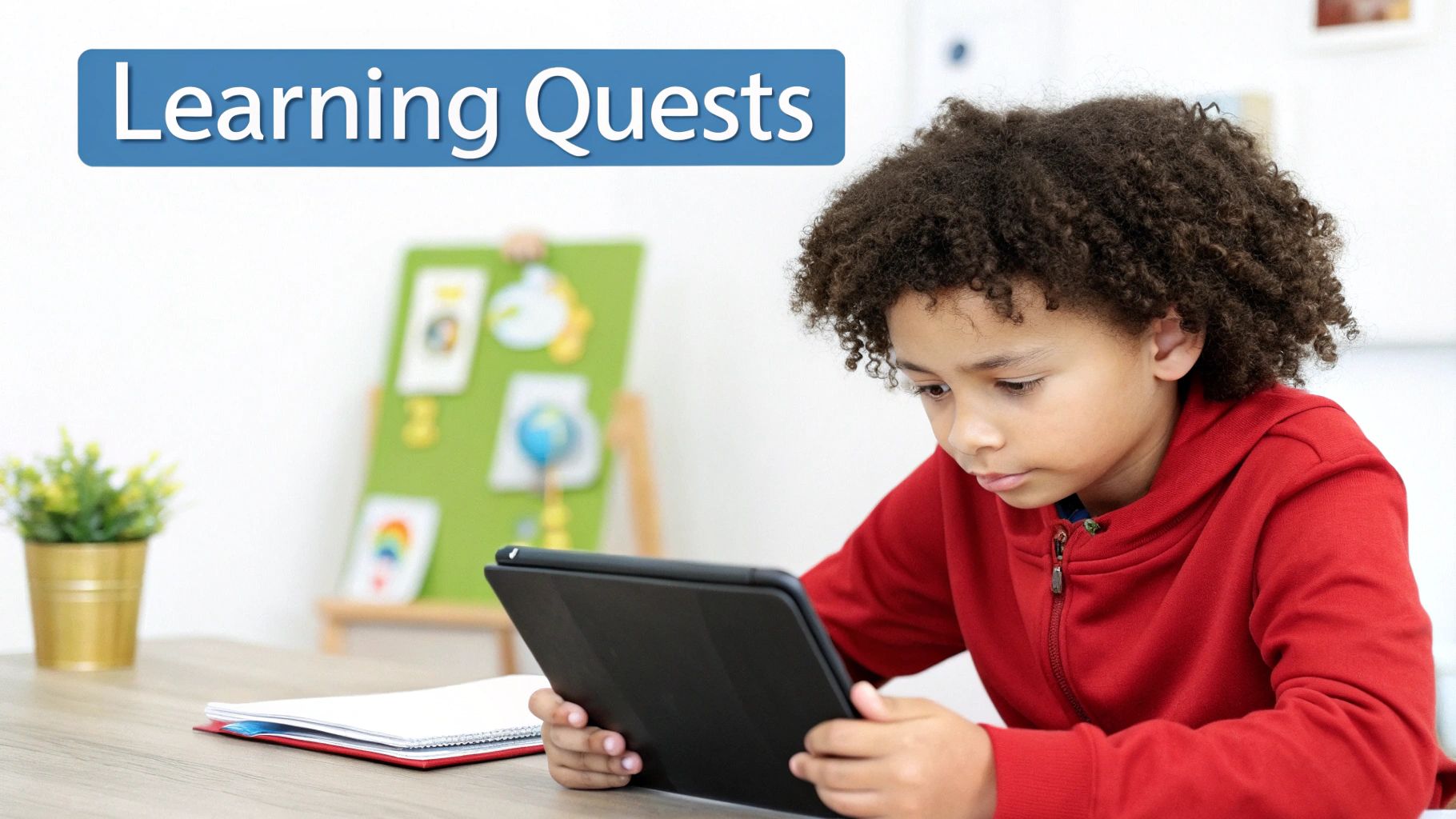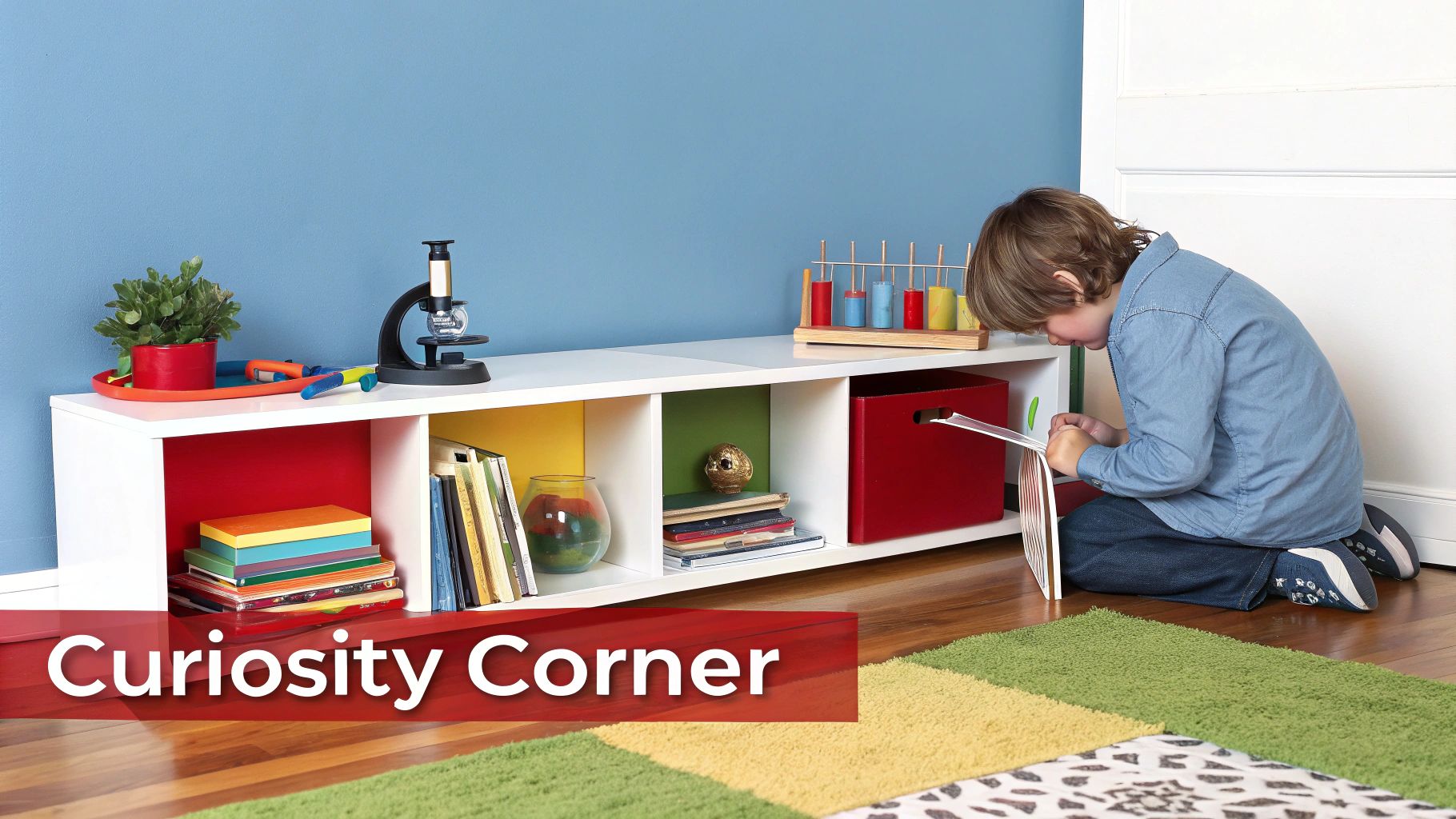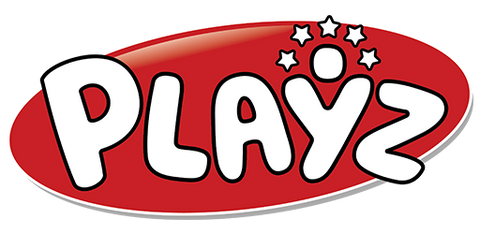
How to Make Learning Fun: An Actionable Guide for Parents
What does it take to make learning genuinely fun? It boils down to three key ingredients: giving it real-world context, sparking creativity, and building a genuine connection to the material.
When a child understands why they’re learning something and gets to engage with it in a creative, hands-on way, the entire dynamic shifts. Learning stops feeling like a chore and starts feeling like an exciting challenge. This guide will walk you through exactly how to put these ideas into practice with actionable strategies and real-world examples.
Why Fun Learning Is the Secret to Success
When learning feels like a game, it does more than just grab a child's attention—it fundamentally changes how their brain processes and retains information. They stop grudgingly memorizing facts for a test and start building a genuine love for discovery. This playful approach fosters a deeper, more lasting understanding that goes far beyond rote memorization.
The real magic happens when you tap into a child's natural curiosity. A fun learning environment gives them the freedom to ask questions, experiment without fear of failure, and connect ideas in new ways. This isn't just about making homework less of a drag; it's about building a foundation for lifelong curiosity and resilience.
Rewiring the Brain for Better Retention
Here’s a fascinating piece of science: enjoyable learning experiences trigger the release of dopamine, a neurotransmitter linked to pleasure, motivation, and memory. This chemical reaction reinforces neural pathways, essentially telling the brain, "Hey, this is important and worth remembering!"
This completely transforms the learning dynamic. Instead of being driven by external pressure (like getting a good grade), a child’s motivation becomes intrinsic—fueled by the pure joy of figuring something out. We dive deeper into the science in our guide on the benefits of hands-on learning.
Key Takeaway: The core difference is simple but profound: one child is forced to learn, while the other is inspired to explore. This inspiration creates enthusiastic, self-driven learners who aren't afraid to tackle new challenges.
Traditional vs Fun Learning Approaches
To truly grasp the difference, it helps to compare these two styles side-by-side. While traditional methods have their place, a fun-first approach often wins for sparking genuine interest and long-term retention.
| Aspect | Traditional Learning (Passive) | Fun Learning (Active) |
|---|---|---|
| Approach | Teacher-led, focused on memorization and repetition. | Student-led, focused on exploration and discovery. |
| Engagement | Often passive; students listen and absorb information. | Active and hands-on; students participate and create. |
| Motivation | Extrinsic (grades, rewards, avoiding punishment). | Intrinsic (curiosity, enjoyment, personal satisfaction). |
| Outcomes | Short-term recall for tests. | Deep understanding and long-term retention. |
The shift is from passively receiving information to actively engaging with it, which makes all the difference for a young, developing mind.
The Rise of Playful Education
This isn't just a feel-good theory; it's a powerful educational strategy gaining serious momentum worldwide. The "gamification" of education—using game-like elements like points and badges to drive engagement—is a perfect example.
Statistics show that gamification's impact on business and education is massive. Student performance has been shown to improve by as much as 89% when gamified elements are introduced into their learning. This proves that when learning is interactive and enjoyable, the results speak for themselves.
Turn Everyday Routines into Learning Adventures

You don't need a perfectly organized classroom or expensive supplies to create amazing learning moments. In fact, some of the most effective lessons are hiding in plain sight, woven right into your family's daily life. By simply shifting your perspective, you can transform ordinary tasks into hands-on learning without adding another thing to your packed schedule.
For instance, a trip to the grocery store isn’t just an errand; it’s a real-world classroom for budgeting, nutrition, and math. Cooking dinner together? That's a delicious chemistry experiment packed with lessons on measurements and chemical reactions. This approach is powerful because it shows kids that learning isn’t confined to a textbook—it's everywhere.
Finding the Learning in Your Daily Grind
So, how do you actually do it? It starts with seeing your routines through a new lens. Instead of just trying to get a task done, start thinking about the "why" and "how" behind it. That small shift is all it takes to spark incredible conversations. A simple walk in the park can become a mini biology lesson when you identify different leaves or watch insects. Even a car ride can be a geography game by spotting license plates from different states.
Actionable Insight: The real goal is to nurture a "curiosity mindset." Create a space where asking questions is the norm and finding answers together is part of the fun. This simple habit turns kids from passive observers into active, engaged thinkers.
Practical Ideas to Get You Started
Ready to give it a try? Here are a few dead-simple ways to turn your daily to-do list into a learning adventure.
-
Grocery Store Math: Before checkout, challenge your kid to estimate the total cost of the items in your cart. Have them weigh produce on the scale to explore weights and measures, or compare unit prices to hunt for the best deal. These are practical money skills they'll use forever.
-
Kitchen Chemistry: Baking is one of the best (and tastiest) ways to teach fractions and basic chemistry. Let them measure out ½ cup of flour or ¾ teaspoon of baking soda and watch what happens when you mix everything together. You can talk about why bread rises or what makes cookies turn brown.
-
Backyard Biology: Go on a bug hunt! Gently turn over a rock and see what critters live underneath. Or, plant a small garden to watch the entire life cycle of a plant unfold, from a tiny seed to something you can eat. It brings abstract science concepts to life right before their eyes.
These small adjustments to existing routines build a powerful foundation for tackling more complex topics. For more ways to encourage this kind of thinking, our guide on how to develop problem-solving skills has fantastic strategies that pair perfectly with these real-world exercises.
Use Gamification to Boost Motivation

If you've ever seen a child completely absorbed in a video game, you already know how powerful gamification is. This isn't about promoting more screen time, but about borrowing the clever elements that make games so addictive—like points, badges, and levels—and applying them to learning.
By adding these simple mechanics, you can completely reframe academic tasks. Suddenly, homework isn’t a chore—it’s a challenge they want to conquer. This approach taps into a child's natural drive for achievement and progress, making the whole process feel more like an adventure than an assignment. And it works. One study found that 67% of students reported that gamified lessons were more engaging and motivating than traditional ones.
Turn Homework into an Exciting Quest
One of the easiest ways to start is to turn regular homework into a "quest." Instead of, "Time for math homework," try framing it as, "Your mission is to solve these ten math puzzles to unlock the next level!" This small shift in language makes a world of difference.
You can even create a simple progress chart. Every finished worksheet or mastered concept earns "experience points" (XP). Once they hit a certain number, they "level up" and unlock a small, meaningful reward, such as:
- Choosing the movie for family movie night.
- Getting 30 extra minutes of playtime before bed.
- Picking what's for dinner one night.
The goal is to provide a tangible sense of accomplishment that reinforces their hard work.
Actionable Insight: When learning has a clear goal and a visible reward system, it activates the same parts of the brain that light up when playing a game. This makes children active participants in their own education, driving them to push forward and see what they can achieve next.
Spark Friendly Competition with Leaderboards
For subjects that require memorization, like spelling words or multiplication tables, a simple leaderboard on the fridge can inject a dose of fun. The point isn’t to create winners and losers, but to celebrate personal bests and group effort. You can also hand out small badges for specific achievements, like a "Word Wizard" badge for acing a spelling list or a "Math Magician" award for solving a tough problem. These tokens are powerful visual reminders of their success.
By bringing game-like elements into learning, you're building a lifelong positive association with education itself—connecting it with excitement and achievement. For more ideas, check out our guide to the best learning games for kids.
Choose Educational Toys That Actually Teach
Walking down the toy aisle can be overwhelming. With bright colors and bold claims, it’s tough to tell which toys will spark real curiosity and which ones will just end up forgotten in a playroom corner. The best educational toys aren’t temporary distractions; they are tools that invite kids to think critically, get creative, and explore the world on their own terms.
A truly great educational toy is almost never a one-trick pony. The key is to look for toys that encourage open-ended play, meaning there’s no single “right” way to use them. Think about a simple set of wooden blocks versus a plastic toy that sings one song when you press a button. Those blocks can become a towering castle, a futuristic spaceship, or a bridge for toy cars—the only limit is the child's imagination. This is essential for building critical thinking and problem-solving skills.
What to Look for in a Great Educational Toy
Before you buy, ask a few quick questions: Can this toy be used in more than one way? Will it grow with my child, offering new challenges as they get older? Does it inspire them to think creatively, or does it just tell them what to do? Thinking through these points helps you cut through the marketing noise and find toys with real, lasting value. A good chemistry set, for example, isn’t just about flashy reactions; it’s about teaching the scientific method through hands-on discovery.
Key Takeaway: The most effective educational toys don't spoon-feed answers. Instead, they encourage kids to ask their own questions. This simple shift is the foundation of building a curious, self-motivated learner who sees challenges as opportunities, not obstacles.
Evaluating Educational Toys: A Parent's Checklist
Use this simple checklist to help you spot toys that offer genuine, long-term educational benefits.
| Feature to Look For | Why It Matters | Example |
|---|---|---|
| Open-Ended Play | Fosters creativity and imagination by allowing for endless possibilities. | Classic building blocks, art supplies, or a simple science kit. |
| Problem-Solving | Challenges a child to think critically and find their own solutions. | Puzzles, construction sets, or beginner coding robots. |
| Hands-On Engagement | Promotes active learning, which helps kids remember what they’ve learned. | A volcano science kit, a crystal-growing experiment, or a model engine. |
| Grows with the Child | Offers different levels of complexity to stay engaging over months or even years. | A set of magnetic tiles that can build simple shapes or complex 3D structures. |
Choosing the right tools is a huge part of making learning fun. When you focus on toys that inspire creativity and critical thought, you’re investing in your child's cognitive development. For a detailed breakdown of our top picks, check out our complete guide to the best educational toys for kids.
Build an Environment That Inspires Curiosity

Having the right activities is only half the battle. The atmosphere you create—both physically and emotionally—can make an even bigger difference in a child's willingness to learn. A supportive environment sends a clear message: it’s safe to try new things, make mistakes, and be curious. It’s less about having a Pinterest-worthy space and more about cultivating a home culture where learning is celebrated in all its messy, wonderful forms. Your attitude and language are your most powerful tools.
Design a 'Curiosity Corner'
You don't need an entire room dedicated to learning. A simple, designated "curiosity corner" can work wonders. This is just a special spot where learning materials are accessible and inviting. The goal is to make discovery a natural part of their day. Keep age-appropriate science kits, building blocks, art supplies, and interesting books within easy reach. When the tools for exploration are right there, kids are far more likely to grab them and start playing on their own.
Actionable Insight: A well-designed learning space isn't just about organization; it's about invitation. It silently communicates that creativity, experimentation, and asking 'what if?' are welcome activities here.
Of course, keeping this space inviting means keeping it reasonably tidy. For great tips on keeping learning materials in order, our guide on how to organize a toy room has simple, effective strategies.
Foster a Growth Mindset Through Language
Beyond the physical space, the emotional environment you build with your words is critical. How you talk about challenges and successes shapes your child’s entire approach to learning. This is the foundation of a growth mindset—the belief that abilities can grow through dedication and hard work. Instead of only praising the final result ("You got an A!"), focus on the process. A growth mindset is nurtured when kids feel valued for their effort and resilience.
Here’s how to reframe your language to build this powerful mindset:
- Instead of: "You're so smart!" Try: "I love how you kept trying even when it got tricky. Your persistence really paid off!"
- Instead of: "That's the wrong answer." Try: "That's an interesting idea! Let's look at it another way and see what we can discover."
- Instead of: "Don't make a mess." Try: "It looks like you're having a great time experimenting! Let’s figure out a plan for cleaning up together when you're done."
This simple shift teaches kids that mistakes are valuable learning opportunities. It creates a safe space where they feel empowered to take on challenges without fear of judgment—the secret ingredient to raising a resilient, lifelong learner.
How Playful Learning Prepares Kids for the Future
When we make learning fun, we're doing more than just surviving tonight's homework. We're building the real-world skills our kids need to navigate a rapidly changing world. Skills like critical thinking, creativity, and collaboration aren't just buzzwords; they’re muscles strengthened through playful practice. Playing with a science kit isn't about memorizing the periodic table; it's about nurturing a problem-solving mindset. Building a story together isn't just a grammar lesson; it's about learning to communicate ideas clearly and effectively.
Cultivating Tomorrow's Innovators Today
Today's world needs adaptable thinkers who can approach complex problems with creative solutions. Fun, hands-on learning is the best training ground for exactly that. Every time a child figures out how to keep a block tower from falling or follows the steps in an experiment, they're practicing analytical and critical thinking skills without even realizing it. This isn't just an abstract educational theory—it’s a massive driver in the global economy.
Businesses understand this well. That's why 70% of Global 2000 companies use gamification principles to drive engagement and results. The core lesson is clear: engagement works.
Key Takeaway: Making learning fun isn’t about dumbing things down or avoiding hard subjects. It’s about arming kids with the enthusiasm and resilience to face challenges head-on, turning them into adaptable, lifelong learners who are ready for anything.
Frequently Asked Questions About Fun Learning
Putting these ideas into practice can bring up some common challenges. Here are answers to a few questions parents frequently ask.
"My child gets distracted easily. How can I keep them engaged?"
For a short attention span, the secret is to think in "micro-lessons." Instead of long study sessions, focus on short, high-energy activities that last 10-15 minutes. These quick bursts are perfect for maintaining focus. Hands-on tasks are your best friend here. A quick, fizzing science experiment or using building blocks to visualize a math problem can capture their attention far better than a worksheet.
"How do I balance fun activities with required schoolwork?"
Think of playful learning as a homework helper, not a replacement for school. Use these activities to bring abstract classroom concepts to life. For example, if they're learning about fractions at school, bake a cake together at home. Slicing it into halves, quarters, and eighths provides a delicious, real-world visual that reinforces their lessons. Fun learning acts as a bridge between classroom theory and practical application.
"What if I'm not a creative person myself?"
You don't need to be a Pinterest-perfect inventor to make learning fun! Sometimes, the biggest impact comes from a simple shift in language. Instead of, "Let's do your homework," try framing it as, "Time to crack this secret code!" When you're feeling stuck, pre-made educational kits and toys are fantastic tools. They provide structured, engaging activities without the pressure of planning everything yourself, letting you focus on the fun of discovering something new together.
Ready to bring more hands-on excitement into your home? Explore the full range of science kits and educational toys from Playz. Discover how easy it is to turn learning into an adventure your child will genuinely love.
